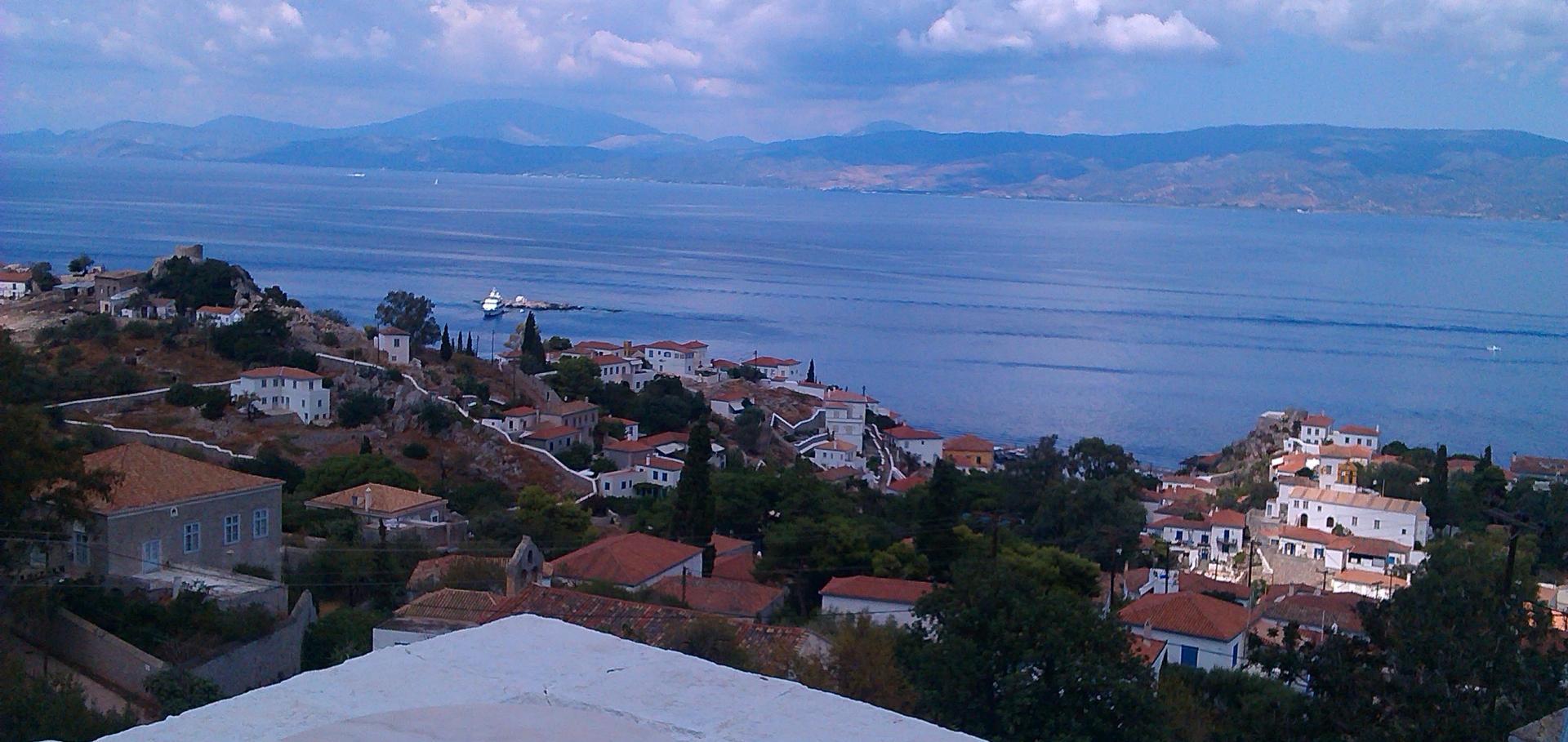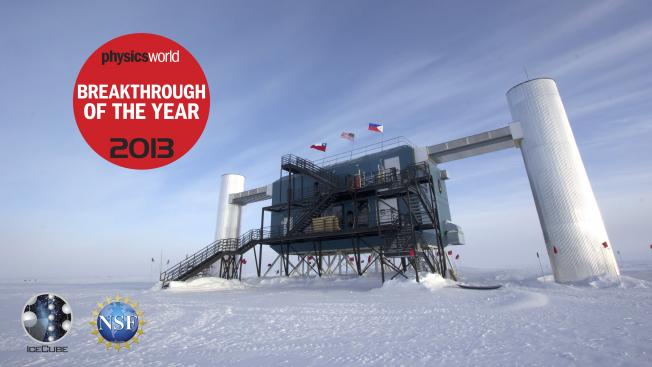Cherenkov Telescope Array Contributions to the 35th International Cosmic Ray Conference (ICRC2017)
(2017)
Authors:
F Acero, BS Acharya, V Acín Portella, C Adams, I Agudo, F Aharonian, I Al Samarai, A Alberdi, M Alcubierre, R Alfaro, J Alfaro, C Alispach, R Aloisio, R Alves Batista, J-P Amans, E Amato, L Ambrogi, G Ambrosi, M Ambrosio, J Anderson, M Anduze, EO Angüner, E Antolini, LA Antonelli, V Antonuccio, P Antoranz, C Aramo, M Araya, C Arcaro, T Armstrong, F Arqueros, L Arrabito, M Arrieta, K Asano, A Asano, M Ashley, P Aubert, CB Singh, A Babic, M Backes, S Bajtlik, C Balazs, M Balbo, O Ballester, J Ballet, L Ballo, A Balzer, A Bamba, R Bandiera, P Barai, C Barbier, M Barcelo, M Barkov, U Barres de Almeida, JA Barrio, D Bastieri, C Bauer, U Becciani, Y Becherini, J Becker Tjus, W Bednarek, A Belfiore, W Benbow, M Benito, D Berge, E Bernardini, MG Bernardini, M Bernardos, S Bernhard, K Bernlöhr, C Bertinelli Salucci, B Bertucci, M-A Besel, V Beshley, J Bettane, N Bhatt, W Bhattacharyya, S Bhattachryya, B Biasuzzi, G Bicknell, C Bigongiari, A Biland, A Bilinsky, R Bird, E Bissaldi, J Biteau, M Bitossi, O Blanch, P Blasi, J Blazek, C Boccato, C Bockermann, C Boehm, M Bohacova, C Boisson, J Bolmont, G Bonanno, A Bonardi, C Bonavolontà, G Bonnoli, J Borkowski, R Bose, Z Bosnjak, M Böttcher, C Boutonnet, F Bouyjou, L Bowman, V Bozhilov, C Braiding, S Brau-Nogué, J Bregeon, M Briggs, A Brill, W Brisken, D Bristow, R Britto, E Brocato, AM Brown, S Brown, K Brügge, P Brun, P Brun, F Brun, L Brunetti, G Brunetti, P Bruno, M Bryan, J Buckley, V Bugaev, R Bühler, A Bulgarelli, T Bulik, M Burton, A Burtovoi, G Busetto, S Buson, J Buss, K Byrum, A Caccianiga, R Cameron, F Canelli, R Canestrari, M Capalbi, M Capasso, F Capitanio, A Caproni, R Capuzzo-Dolcetta, P Caraveo, V Cárdenas, J Cardenzana, M Cardillo, C Carlile, S Caroff, R Carosi, A Carosi, E Carquín, J Carr, J-M Casandjian, S Casanova, E Cascone, AJ Castro-Tirado, J Castroviejo Mora, F Catalani, O Catalano, D Cauz, C Celestino Silva, S Celli, M Cerruti, E Chabanne, P Chadwick, N Chakraborty, C Champion, A Chatterjee, S Chaty, R Chaves, A Chen, X Chen, K Cheng, M Chernyakova, M Chikawa, VR Chitnis, A Christov, J Chudoba, M Cieślar, P Clark, V Coco, S Colafrancesco, P Colin, E Colombo, J Colome, S Colonges, V Conforti, V Connaughton, J Conrad, JL Contreras, R Cornat, J Cortina, A Costa, H Costantini, G Cotter, B Courty, S Covino, G Covone, P Cristofari, SJ Criswell, R Crocker, J Croston, C Crovari, J Cuadra, O Cuevas, X Cui, P Cumani, G Cusumano, A D'Aì, F D'Ammando, P D'Avanzo, D D'Urso, P Da Vela, Ø Dale, VT Dang, L Dangeon, M Daniel, I Davids, B Dawson, F Dazzi, A De Angelis, V De Caprio, R de Cássia dos Anjos, G De Cesare, A De Franco, F De Frondat, EM de Gouveia Dal Pino, I de la Calle, C De Lisio, R de los Reyes Lopez, B De Lotto, A De Luca, M De Lucia, JRT de Mello Neto, M de Naurois, E de Oña Wilhelmi, F De Palma, F De Persio, V de Souza, J Decock, C Deil, P Deiml, M Del Santo, E Delagnes, G Deleglise, M Delfino Reznicek, C Delgado, J Delgado Mengual, R Della Ceca, D della Volpe, M Detournay, J Devin, T Di Girolamo, C Di Giulio, F Di Pierro, L Di Venere, L Diaz, C Díaz, C Dib, H Dickinson, S Diebold, S Digel, A Djannati-Ataï, M Doert, A Domínguez, D Dominis Prester, I Donnarumma, D Dorner, M Doro, J-L Dournaux, T Downes, G Drake, S Drappeau, H Drass, D Dravins, L Drury, G Dubus, K Dundas Morå, A Durkalec, V Dwarkadas, J Ebr, C Eckner, E Edy, K Egberts, S Einecke, J Eisch, F Eisenkolb, TRN Ekoume, C Eleftheriadis, D Elsässer, D Emmanoulopoulos, J-P Ernenwein, P Escarate, S Eschbach, C Espinoza, P Evans, C Evoli, M Fairbairn, D Falceta-Goncalves, A Falcone, V Fallah Ramazani, K Farakos, E Farrell, G Fasola, Y Favre, E Fede, R Fedora, E Fedorova, S Fegan, M Fernandez-Alonso, A Fernández-Barral, G Ferrand, O Ferreira, M Fesquet, E Fiandrini, A Fiasson, M Filipovic, D Fink, JP Finley, C Finley, A Finoguenov, V Fioretti, M Fiorini, H Flores, L Foffano, C Föhr, MV Fonseca, L Font, G Fontaine, M Fornasa, P Fortin, L Fortson, N Fouque, B Fraga, FJ Franco, L Freixas Coromina, C Fruck, D Fugazza, Y Fujita, S Fukami, Y Fukazawa, Y Fukui, S Funk, A Furniss, M Füßling, S Gabici, A Gadola, Y Gallant, D Galloway, S Gallozzi, B Garcia, A Garcia, R García Gil, R Garcia López, M Garczarczyk, D Gardiol, F Gargano, C Gargano, S Garozzo, M Garrido-Ruiz, D Gascon, T Gasparetto, F Gaté, M Gaug, B Gebhardt, M Gebyehu, N Geffroy, B Genolini, A Ghalumyan, A Ghedina, G Ghirlanda, P Giammaria, F Gianotti, B Giebels, N Giglietto, V Gika, R Gimenes, P Giommi, F Giordano, G Giovannini, E Giro, M Giroletti, J Gironnet, A Giuliani, J-F Glicenstein, R Gnatyk, N Godinovic, P Goldoni, JL Gómez, G Gómez-Vargas, MM González, JM González, KS Gothe, D Gotz, J Goullon, T Grabarczyk, R Graciani, J Graham, P Grandi, J Granot, G Grasseau, R Gredig, AJ Green, T Greenshaw, I Grenier, S Griffiths, A Grillo, M-H Grondin, J Grube, V Guarino, B Guest, O Gueta, S Gunji, G Gyuk, D Hadasch, L Hagge, J Hahn, A Hahn, H Hakobyan, S Hara, MJ Hardcastle, T Hassan, T Haubold, A Haupt, K Hayashi, M Hayashida, H He, M Heller, JC Helo, F Henault, G Henri, G Hermann, R Hermel, J Herrera Llorente, A Herrero, O Hervet, N Hidaka, J Hinton, N Hiroshima, K Hirotani, B Hnatyk, JK Hoang, D Hoffmann, W Hofmann, J Holder, D Horan, J Hörandel, M Hörbe, D Horns, P Horvath, J Houles, T Hovatta, M Hrabovsky, D Hrupec, J-M Huet, G Hughes, D Hui, G Hull, TB Humensky, M Hussein, M Hütten, M Iarlori, Y Ikeno, JM Illa, D Impiombato, T Inada, A Ingallinera, Y Inome, S Inoue, T Inoue, Y Inoue, F Iocco, K Ioka, M Ionica, M Iori, A Iriarte, K Ishio, GL Israel, Y Iwamura, C Jablonski, A Jacholkowska, J Jacquemier, M Jamrozy, P Janecek, F Jankowsky, D Jankowsky, P Jansweijer, C Jarnot, P Jean, CA Johnson, M Josselin, I Jung-Richardt, J Jurysek, P Kaaret, P Kachru, M Kagaya, J Kakuwa, O Kalekin, R Kankanyan, A Karastergiou, M Karczewski, S Karkar, H Katagiri, J Kataoka, K Katarzyński, U Katz, N Kawanaka, L Kaye, D Kazanas, N Kelley-Hoskins, B Khélifi, DB Kieda, T Kihm, S Kimeswenger, S Kimura, S Kisaka, S Kishida, R Kissmann, W Kluźniak, J Knapen, J Knapp, J Knödlseder, B Koch, J Kocot, K Kohri, N Komin, A Kong, Y Konno, K Kosack, G Kowal, S Koyama, M Kraus, M Krause, F Krauß, F Krennrich, P Kruger, H Kubo, V Kudryavtsev, G Kukec Mezek, S Kumar, H Kuroda, J Kushida, P Kushwaha, N La Palombara, V La Parola, G La Rosa, R Lahmann, K Lalik, G Lamanna, M Landoni, D Landriu, H Landt, RG Lang, J Lapington, P Laporte, O Le Blanc, T Le Flour, P Le Sidaner, S Leach, A Leckngam, S-H Lee, WH Lee, J-P Lees, J Lefaucheur, MA Leigui de Oliveira, M Lemoine-Goumard, J-P Lenain, G Leto, R Lico, M Limon, R Lindemann, E Lindfors, L Linhoff, A Lipniacka, S Lloyd, T Lohse, S Lombardi, F Longo, M Lopez, R Lopez-Coto, T Louge, F Louis, M Louys, F Lucarelli, D Lucchesi, PL Luque-Escamilla, E Lyard, MC Maccarone, T Maccarone, E Mach, GM Madejski, G Maier, A Majczyna, P Majumdar, M Makariev, G Malaguti, A Malouf, S Maltezos, D Malyshev, D Malyshev, D Mandat, G Maneva, M Manganaro, S Mangano, P Manigot, K Mannheim, N Maragos, D Marano, A Marcowith, J Marín, M Mariotti, M Marisaldi, S Markoff, J Martí, J-M Martin, P Martin, L Martin, M Martínez, G Martínez, O Martínez, R Marx, N Masetti, P Massimino, A Mastichiadis, M Mastropietro, S Masuda, H Matsumoto, N Matthews, S Mattiazzo, G Maurin, N Maxted, M Mayer, D Mazin, MN Mazziotta, L Mc Comb, I McHardy, C Medina, A Melandri, C Melioli, D Melkumyan, S Mereghetti, J-L Meunier, T Meures, M Meyer, S Micanovic, T Michael, J Michałowski, I Mievre, J Miller, IA Minaya, T Mineo, F Mirabel, JM Miranda, R Mirzoyan, A Mitchell, T Mizuno, R Moderski, M Mohammed, L Mohrmann, C Molijn, E Molinari, R Moncada, T Montaruli, I Monteiro, D Mooney, P Moore, A Moralejo, D Morcuende-Parrilla, E Moretti, K Mori, G Morlino, P Morris, A Morselli, F Moscato, D Motohashi, E Moulin, S Mueller, R Mukherjee, P Munar, C Mundell, J Mundet, T Murach, H Muraishi, K Murase, A Murphy, A Nagai, N Nagar, S Nagataki, T Nagayoshi, BK Nagesh, T Naito, D Nakajima, T Nakamori, Y Nakamura, K Nakayama, D Naumann, P Nayman, D Neise, L Nellen, R Nemmen, A Neronov, N Neyroud, T Nguyen, TT Nguyen, T Nguyen Trung, L Nicastro, J Nicolau-Kukliński, J Niemiec, D Nieto, M Nievas-Rosillo, M Nikołajuk, K Nishijima, K-I Nishikawa, G Nishiyama, K Noda, L Nogues, S Nolan, D Nosek, M Nöthe, B Novosyadlyj, S Nozaki, F Nunio, P O'Brien, L Oakes, C Ocampo, JP Ochoa, R Oger, Y Ohira, M Ohishi, S Ohm, N Okazaki, A Okumura, J-F Olive, RA Ong, M Orienti, R Orito, A Orlati, JP Osborne, M Ostrowski, N Otte, Z Ou, E Ovcharov, I Oya, A Ozieblo, M Padovani, S Paiano, A Paizis, J Palacio, M Palatiello, M Palatka, J Pallotta, J-L Panazol, D Paneque, M Panter, R Paoletti, M Paolillo, A Papitto, A Paravac, JM Paredes, G Pareschi, RD Parsons, P Paśko, S Pavy, A Pe'er, M Pech, G Pedaletti, P Peñil Del Campo, A Perez, MA Pérez-Torres, L Perri, M Perri, M Persic, A Petrashyk, S Petrera, P-O Petrucci, O Petruk, B Peyaud, M Pfeifer, G Piano, Q Piel, D Pieloth, F Pintore, C Pio García, A Pisarski, S Pita, L Pizarro, Ł Platos, M Pohl, V Poireau, A Pollo, J Porthault, J Poutanen, D Pozo, E Prandini, P Prasit, J Prast, K Pressard, G Principe, D Prokhorov, H Prokoph, M Prouza, G Pruteanu, E Pueschel, G Pühlhofer, I Puljak, M Punch, S Pürckhauer, F Queiroz, J Quinn, A Quirrenbach, I Rafighi, S Rainò, PJ Rajda, R Rando, RC Rannot, S Razzaque, I Reichardt, O Reimer, A Reimer, A Reisenegger, M Renaud, T Reposeur, B Reville, AH Rezaeian, W Rhode, D Ribeiro, M Ribó, MG Richer, T Richtler, J Rico, F Rieger, M Riquelme, PR Ristori, S Rivoire, V Rizi, J Rodriguez, G Rodriguez Fernandez, JJ Rodríguez Vázquez, G Rojas, P Romano, G Romeo, M Roncadelli, J Rosado, S Rosen, S Rosier Lees, J Rousselle, AC Rovero, G Rowell, B Rudak, A Rugliancich, JE Ruíz del Mazo, W Rujopakarn, C Rulten, F Russo, O Saavedra, S Sabatini, B Sacco, I Sadeh, E Sæther Hatlen, S Safi-Harb, V Sahakian, S Sailer, T Saito, N Sakaki, S Sakurai, D Salek, F Salesa Greus, G Salina, D Sanchez, M Sánchez-Conde, H Sandaker, A Sandoval, P Sangiorgi, M Sanguillon, H Sano, M Santander, A Santangelo, EM Santos, A Sanuy, L Sapozhnikov, S Sarkar, K Satalecka, Y Sato, FG Saturni, R Savalle, M Sawada, S Schanne, EJ Schioppa, S Schlenstedt, T Schmidt, J Schmoll, M Schneider, H Schoorlemmer, P Schovanek, A Schulz, F Schussler, U Schwanke, J Schwarz, T Schweizer, S Schwemmer, E Sciacca, S Scuderi, M Seglar-Arroyo, A Segreto, I Seitenzahl, D Semikoz, O Sergijenko, N Serre, M Servillat, K Seweryn, K Shah, A Shalchi, M Sharma, RC Shellard, I Shilon, L Sidoli, M Sidz, H Siejkowski, J Silk, A Sillanpää, D Simone, BB Singh, G Sironi, J Sitarek, P Sizun, V Sliusar, A Slowikowska, A Smith, D Sobczyńska, A Sokolenko, H Sol, G Sottile, W Springer, O Stahl, A Stamerra, S Stanič, R Starling, D Staszak, Ł Stawarz, R Steenkamp, S Stefanik, C Stegmann, S Steiner, C Stella, M Stephan, R Sternberger, M Sterzel, B Stevenson, M Stodulska, M Stodulski, T Stolarczyk, G Stratta, U Straumann, R Stuik, M Suchenek, T Suomijarvi, AD Supanitsky, T Suric, I Sushch, P Sutcliffe, J Sykes, M Szanecki, T Szepieniec, G Tagliaferri, H Tajima, K Takahashi, H Takahashi, M Takahashi, L Takalo, S Takami, J Takata, J Takeda, T Tam, M Tanaka, T Tanaka, Y Tanaka, S Tanaka, C Tanci, M Tavani, F Tavecchio, J-P Tavernet, K Tayabaly, LA Tejedor, F Temme, P Temnikov, Y Terada, JC Terrazas, R Terrier, D Terront, T Terzic, D Tescaro, M Teshima, V Testa, S Thoudam, W Tian, L Tibaldo, A Tiengo, D Tiziani, M Tluczykont, CJ Todero Peixoto, F Tokanai, M Tokarz, K Toma, J Tomastik, A Tonachini, D Tonev, M Tornikoski, DF Torres, E Torresi, G Tosti, T Totani, N Tothill, F Toussenel, G Tovmassian, N Trakarnsirinont, P Travnicek, C Trichard, M Trifoglio, I Troyano Pujadas, M Tsirou, S Tsujimoto, T Tsuru, Y Uchiyama, G Umana, M Uslenghi, V Vagelli, F Vagnetti, M Valentino, P Vallania, L Valore, AM Van den Berg, W van Driel, C van Eldik, B van Soelen, J Vandenbroucke, J Vanderwalt, GS Varner, G Vasileiadis, V Vassiliev, JR Vázquez, M Vázquez Acosta, M Vecchi, A Vega, P Veitch, P Venault, C Venter, S Vercellone, P Veres, S Vergani, V Verzi, GP Vettolani, C Veyssiere, A Viana, J Vicha, C Vigorito, J Villanueva, P Vincent, J Vink, F Visconti, V Vittorini, H Voelk, V Voisin, A Vollhardt, S Vorobiov, I Vovk, M Vrastil, T Vuillaume, SJ Wagner, R Wagner, P Wagner, SP Wakely, T Walstra, R Walter, M Ward, JE Ward, D Warren, JJ Watson, N Webb, P Wegner, O Weiner, A Weinstein, C Weniger, F Werner, H Wetteskind, M White, R White, A Wierzcholska, S Wiesand, R Wijers, P Wilcox, A Wilhelm, M Wilkinson, M Will, DA Williams, M Winter, P Wojcik, D Wolf, M Wood, A Wörnlein, T Wu, KK Yadav, C Yaguna, T Yamamoto, H Yamamoto, N Yamane, R Yamazaki, S Yanagita, L Yang, D Yelos, T Yoshida, M Yoshida, S Yoshiike, T Yoshikoshi, P Yu, D Zaborov, M Zacharias, G Zaharijas, A Zajczyk, L Zampieri, F Zandanel, R Zanin, R Zanmar Sanchez, D Zaric, M Zavrtanik, D Zavrtanik, AA Zdziarski, A Zech, H Zechlin, VI Zhdanov, A Ziegler, J Ziemann, K Ziętara, A Zink, J Ziółkowski, V Zitelli, A Zoli, J Zorn



